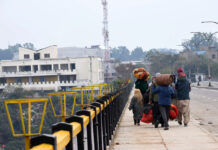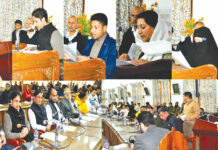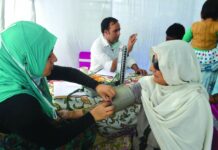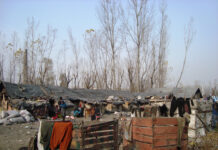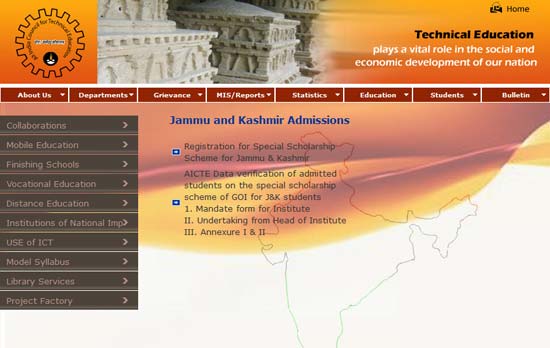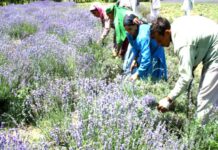An ignorant public and an apathetic government had contributed to the rot of water bodies in Kashmir, however, a woken up government is putting in a scientific approach to reclaim these water bodies. Ikhlaq Qadri reports.
Though cleaning of Dal lake has been focus of concerted efforts for decades, it is only in recent years the efforts are bearing fruit. Scientists say a departure from the narrow and ‘naive’ approach has led to the change.
The transformation has been made possible mainly by building sewage treatment plants (STPs), dredging waterways and keeping silt away from the water bodies.
The choking of flushing routes and lagoons connected to Dal kept all the detritus, sludge, organic matter and all the pollutants within the lake which as a natural process would be flushed from the lake at the time of peak water levels and discharge.
“We will be seeing, at least the Dal lake, getting rejuvenated much sooner than our pessimism may allow us to,” says Pervez Sajad an entomology post graduate.
Brari Nambal is an important link between Dal and river Jehlum and one of the lake’s most important flushing routes. The closure of Nallahmar stream, to pave way for the present day Nallahmar Road, led to stagnation of Brari Nambal lagoon as most of the sewage from adjoining areas found its way into it. For more than three decades nutrients, sludge, debris, organic matter was deposited in the lagoon leading to its death and a foul stench that permeated the whole area.
“It (Brari Nambal Lagoon) was virtually dead; in scientific terms the process is called dystrophy,” said Dr Saba-u-Saalim, a scientist with Lakes and Water ways Development Authority.
Apart from the blocking of the lagoon proving detrimental for Dal Lake, lot of pollutants and detritus and sewage got deposited in Brari Nambal leading to a foul smell that engulfed the whole densely populated area around it.
All the 17 sewage drains in the area emptied into the lagoon, untreated. The LAWDA made it a top priority to treat the sewage and dredge the lagoon and its connecting waterway with Jehlum river to restore an important link between Dal Lake and River Jehlum.
“Flushing route was the first thing to be dealt with,” Dr Saalim told Kashmir Life.
 The authorities created an alternate underground channel to the blocked Nallahmar near Fateh Kadal connecting the lagoon with Jehlum.
The authorities created an alternate underground channel to the blocked Nallahmar near Fateh Kadal connecting the lagoon with Jehlum.
“As the lagoon got an outlet channel it started to throw out sludge and other mass accumulated over the decades and started to live afresh,” scientists told Kashmir Life.
Out of 17 drains flowing into the lagoon, 16 have been diverted for treatment to an STP at Brari Nambal. Experts say it will go a long way in helping in the rejuvenation of the lagoon.
“Sixteen (drains) have already been diverted (to the STP) and the remaining one may also be diverted (to the STP),” said Dr Saalim.
After restoring the flushing route or the outlet, LAWDA restored the Nawpora channel that feeds Brari Nambal. With the dredging and restoration of the feeding channel and the outlet, the inflow and outflow of water was restored in the Brari Nambal lagoon.
The LAWDA employed the ‘Water Master Classic’ machine to dredge the lagoon and is now mulling beautification of the lagoon and setting up a boat club in the reclaimed lagoon.
“The shore line (concrete dykes) is under construction and the temple inside the water body is being restored. The lagoon will have a boat club which will be attractive for the people. There will be fountains and lighting system all around which will add to its beauty,” Dr Saalim said.
The officials said that land acquisition has been a problem as people under whose possession the land is, are demanding lot of money as compensation.
“We are trying to get the land (of the lagoon) but the people are demanding huge money… far more than what is given to people who have to surrender land in the Dal lake,” said an official.
The dredging and cleaning of the lagoon has got LAWDA accolades from the people in the area as the unbearable stench emanating from the lagoon has been reduced to a large extent.
“Our relatives used to taunt us for living in an area engulfed with foul stench but now it is much better. Well done LAWDA,” said Shafat Ahmad Shah, who lives in the vicinity.
Irfan Yaseem, Vice Chairman LAWDA said, “We are almost half way (in restoring Brari Nambal lagoon) and will do the rest.”
The LAWDA’s Brari Nambal project comes after the successful restoration of Chuntkul – an out fall channel of Dal. Though the Chuntikul project was a smaller project, it is important for the Dal for water level manipulation and water level regulation in it.
“Chuntkul, Brari Nambal, Gilsar, Khushalsar, Amda Kadal, Pokhribal all these are to Dal lake what arteries are to human beings,” said Yaseen.
The Chuntkul channel was silted up and blocked with more than 100 hutments built over it by illegal encroachments.
“With the help of Water Master Classic we did the dredging and state government helped in removing encroachments while the tourism department restored Chinar Park,” said Dr Saalim. The LAWDA is regulating the water level constantly in Chuntkul which was not done in past.
The department is having three Swiss made machines and two Finnish dredgers.
“In March we are getting nine more barges,” said Yaseen The department is going to add two more sewage treatment plants by the end of 2011, one will be of 16.1 million litres and other 7.5 million litres, taking the combined capacity of STPs in Srinagar city to 36 million litres a day. The house connectivity to the existing STP is around 96 percent.
“In next month our connectivity will be 100 percent,” Yaseen told Kashmir Life.
Irfan also added that the project to clean Dal will take around two and half years and work is being intensified.


